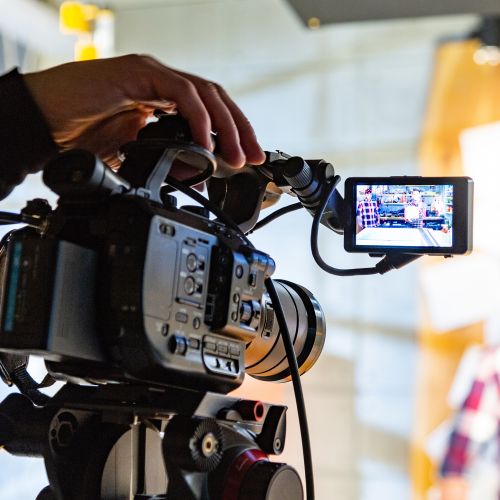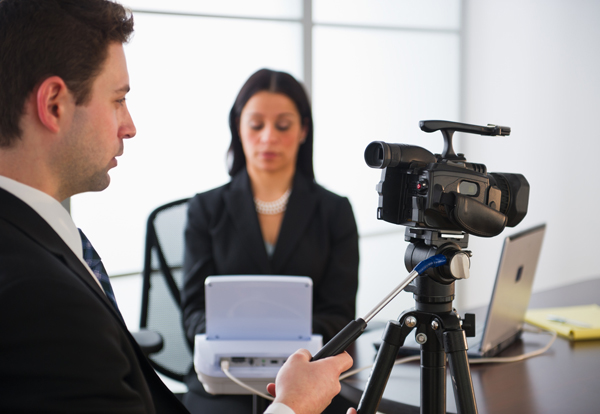Exploring the Mechanisms of Lawful Videography: Introduction Its Procedure in Shielding Authentic Visual Testimony for Judicial Procedures
In the world of judicial procedures, the function of lawful videography stands as a keystone in preserving and providing aesthetic proof. As innovation remains to breakthrough, the systems behind lawful videography have actually come to be significantly detailed, using a critical layer of authenticity to testimonies captured on video clip. By diving into the operational complexities of legal videography, one can reveal the meticulous procedures that secure the stability of aesthetic proof presented in courtrooms - Legal Videography. This exploration not just clarifies the historic evolution of legal videography yet likewise hints at the future patterns that may additionally revolutionize how visual testimonies are upheld in the realm of justice.
Historical Advancement of Legal Videography
Checking out the historical progression of lawful videography exposes a significant improvement in the catching and discussion of aesthetic evidence within the lawful landscape. In the past, lawful proceedings greatly depended on composed transcripts and photos to record events and offer proof. With the advent of video clip innovation, the lawful market witnessed a standard shift in just how visual testimony was recorded and presented.
The development of lawful videography can be mapped back to the late 20th century when developments in video clip recording devices made it much more easily accessible for use in court rooms. This technical innovation not only boosted the accuracy and integrity of visual evidence however additionally revolutionized the means instances existed to juries and courts (Legal Videography). Lawyers began to identify the persuasive power of video clip recordings in conveying feelings, nuances, and non-verbal signs that created transcripts or photos alone can not catch properly

Technology Innovations in Video Documentation
What key technical developments have changed video clip paperwork in the lawful area? The legal area has seen significant developments in video documents technology that have improved the credibility and integrity of aesthetic proof in judicial process. One of the essential advancements is high-def (HD) video recording capacities, which offer crystal-clear images and sharp details that are critical for properly capturing testaments, faces, and various other aesthetic hints. Additionally, the combination of timestamping and metadata features in video documentation devices has enabled accurate documentation of when and where the video was tape-recorded, making certain the integrity of the evidence presented in court.
Furthermore, developments in video file encryption and watermarking technologies have actually reinforced the safety and tamper-proof nature of video clip proof, protecting it versus unapproved changes or tampering. The advent of cloud storage options and remote access capacities has structured the storage, retrieval, and sharing of video proof, facilitating smooth collaboration among lawful experts and making sure efficient accessibility to vital aesthetic testimonies when required. These technological advancements in video documentation have actually undoubtedly changed the lawful area, enhancing the accuracy, reliability, and admissibility of visual proof in judicial proceedings.
Role of Lawful Videographers in Court Room Settings
The development of video clip paperwork read technology in the lawful area has actually demanded a vital function for legal videographers in court settings, guaranteeing the honesty and reliability of aesthetic testimonies offered during judicial process. Lawful videographers play an essential duty in catching and protecting accurate aesthetic evidence that can be critical in court instances. Their duty encompasses setting up devices, tape-recording proceedings, and creating top notch videos that accurately mirror the events in the courtroom.
In courtroom setups, lawful videographers should comply with rigorous standards and requirements to keep the credibility of the aesthetic record. They must have an eager eye for information and a thorough understanding of legal treatments to make sure that the video footage they capture is a true depiction of the events that transpired. Furthermore, lawful videographers frequently work closely with lawful teams to make certain that the video clip proof aligns with the situation's needs and can be efficiently provided in court to sustain the lawful arguments being made. Generally, the role of lawful videographers in court room settings is vital in promoting the concepts of justice and making certain the openness of legal procedures.

Ensuring Admissibility and Stability of Video Proof
To keep the reputation of visual proof offered in lawful proceedings, making certain the admissibility and stability of video proof is an essential responsibility for legal videographers. Admissibility describes the acceptance of proof by the court, and for video clip proof to be permissible, it must fulfill specific requirements. Legal videographers play a crucial function in making certain that the videos they capture comply with the rules of evidence, such as credibility, dependability, and significance.
Integrity of video clip proof involves keeping the originality and precision of the video from the moment it is recorded up until it exists in court. This consists of firmly storing the video documents, documenting the chain of guardianship, and avoiding any tampering or modifications. Legal videographers need to stick to rigorous procedures to guarantee the integrity of the video clip evidence and stop any type of obstacles to websites its authenticity.
Future Trends in Legal Videography
Given the raising reliance on modern technology in legal process, legal videographers are poised to embrace cutting-edge developments forming the future of visual testament capture and discussion. One of the famous fads imminent is the integration of virtual truth (VR) and boosted reality (AR) technologies right into lawful videography. These technologies have the potential to reinvent exactly how aesthetic evidence is presented in courtrooms, allowing courts and courts to submerse themselves in the scene of the criminal activity or incident.
In addition, using synthetic intelligence (AI) algorithms for video analysis is expected to improve the procedure of evaluating and analyzing huge amounts of video clip footage. AI can help in determining essential moments, anomalies, and patterns within videos, improving the performance of lawful examinations.

Conclusion
In verdict, lawful videography has actually played a vital function in giving genuine visual proof for judicial procedures. With technical innovations and the proficiency of legal videographers, the honesty and admissibility of video clip proof are made sure in court room setups. As legal videography continues to develop, it will certainly be necessary to copyright standards that maintain the precision and reliability of visual testimony for the future of lawful process.
Checking out the historic progression of legal videography exposes a significant change in the capturing and discussion of visual evidence within the lawful landscape.The evolution of video paperwork technology in the lawful field has demanded an essential function for lawful videographers in court room setups, guaranteeing the integrity and reliability of aesthetic statements provided throughout judicial proceedings. Additionally, lawful videographers usually function carefully with legal groups to guarantee that the video proof lines up with the case's needs and can be efficiently provided in court to sustain the lawful debates being made.To preserve the reliability of aesthetic evidence provided in lawful procedures, making sure the admissibility and integrity of video proof is a vital responsibility for legal videographers. As legal videography continues to develop, it will certainly be crucial to support criteria that preserve the precision and integrity of visual testimony for the future of lawful procedures.